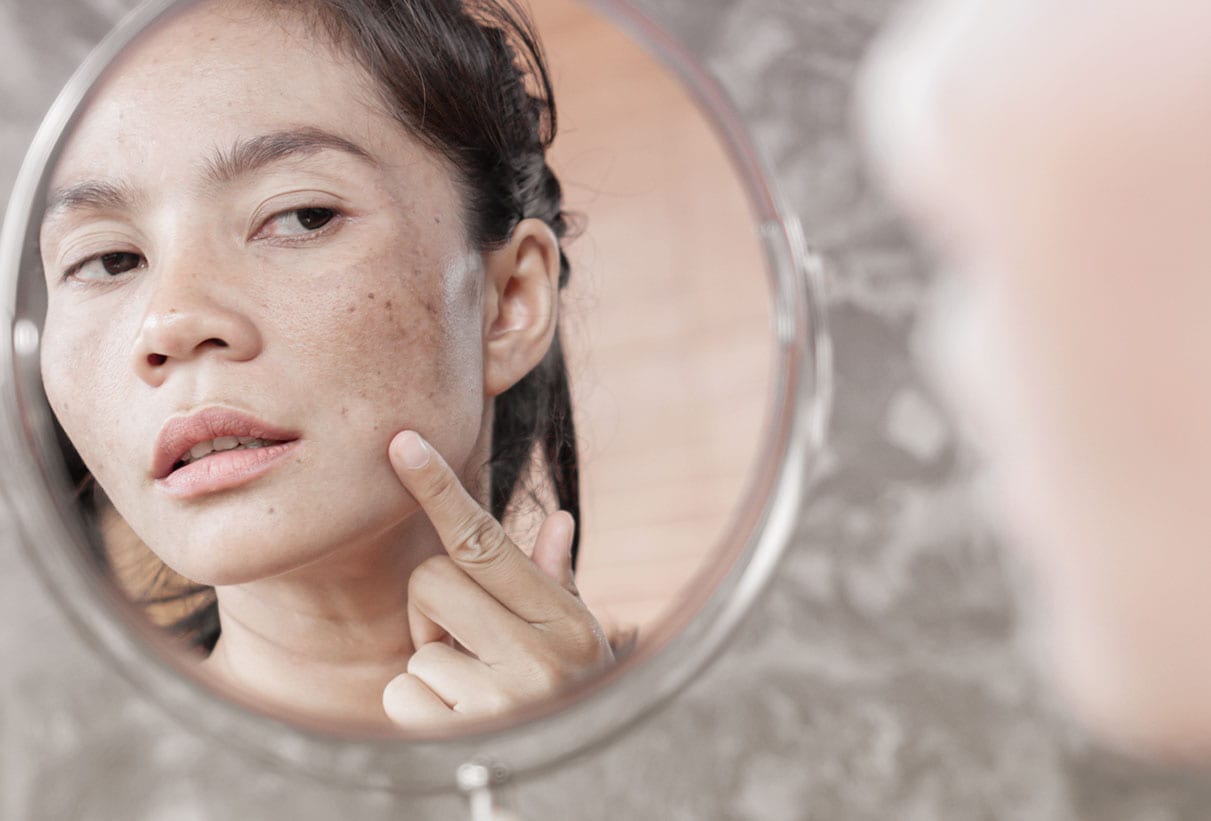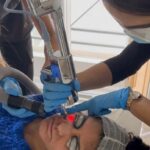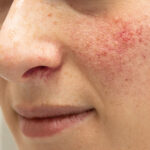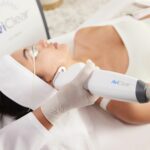
When it’s the entity known colloquially as “fungal acne”. The medical word for this is Malasezzia folliculitis or Pityrosporum folliculitis. This particular skin condition is under-recognised and can often be confused with acne to the untrained eye (or co-exist with acne in a person requiring two simultaneous diagnoses). I see a lot of this in clinic with warmer weather or in patients who exercise a lot.
What does it look like?
Malasezzia folliculitis normally consists of small red spots or pustules measuring 1-2 mm in size; the spots themselves all look very similar to each other (described as “monomorphic”). They typically appear on the forehead, hairline and upper back or chest. Itching is a common symptom (which you don’t normally see in regular acne) and can appear in 65% of those affected.
Why does it occur?
Pityrosporum folliculitis is caused by a yeast which naturally lives on the skin known as Malasezzia. This fungus forms part of the skin’s natural microbiome but in some people who are susceptible it has been linked to skin disease including folliculitis and seborrhoeic dermatitis.
What are known risk factors?
Pityrosporum folliculitis can affect individuals of various races and sexes equally. Common triggers include humidity, excess sweating, oily skin, potential occlusion from skincare and sunscreens, antibiotic or steroid use and a suppressed immune system.
How is it treated?
It is important to make the diagnosis first and differentiate it from acne. This is key as Pityrosporum folliculitis will not respond to normal acne treatments. If anything, standard first-line acne treatments such as oral antibiotics may trigger the condition. Even when treated, the problem has a tendency to recur. Standard therapy usually requires prescription of an oral antifungal agent and then topical shampoos containing selenium or ketoconazole 2% longer-term as maintenance. Oral treatments tend to be more effective than those applied topically to the skin, based on current data we have.
Final thoughts
Pityrosporum folliculitis can mimic acne; both conditions look very similar which can lead to confusion. Getting a diagnosis is key in managing the condition as it requires very different treatment from regular acne. Sometimes, one person may suffer with both and therefore treatment needs to be targeted appropriately to both skin problems. If you have any doubt about the type of acne you are suffering from, seek advice from an appropriate health professional such as your GP or dermatologist for confirmation.





